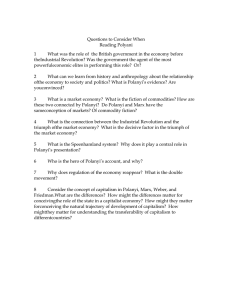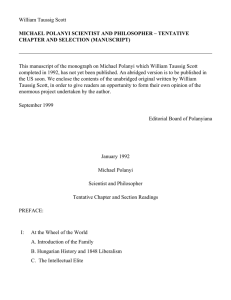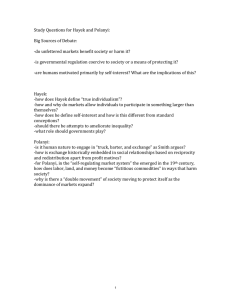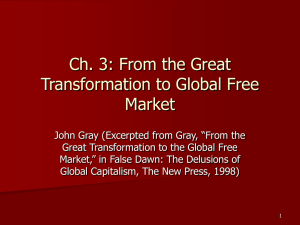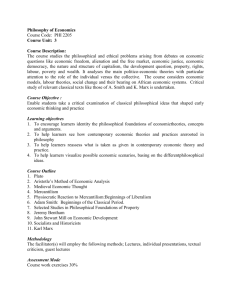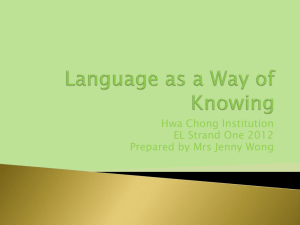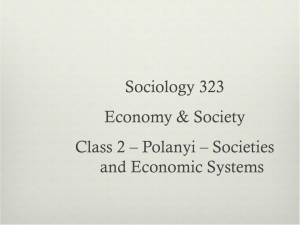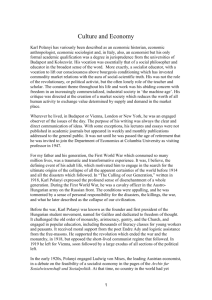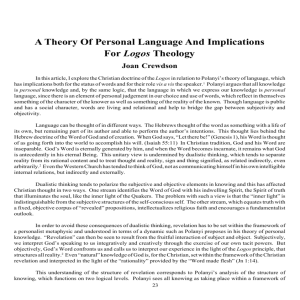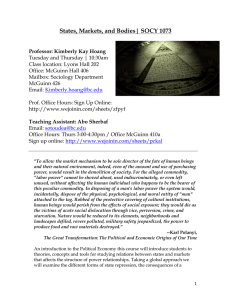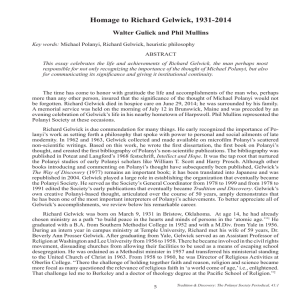17.195/196 – Globalization Fall 2005 Lecture 2 - September 26 The Great Transformation
advertisement
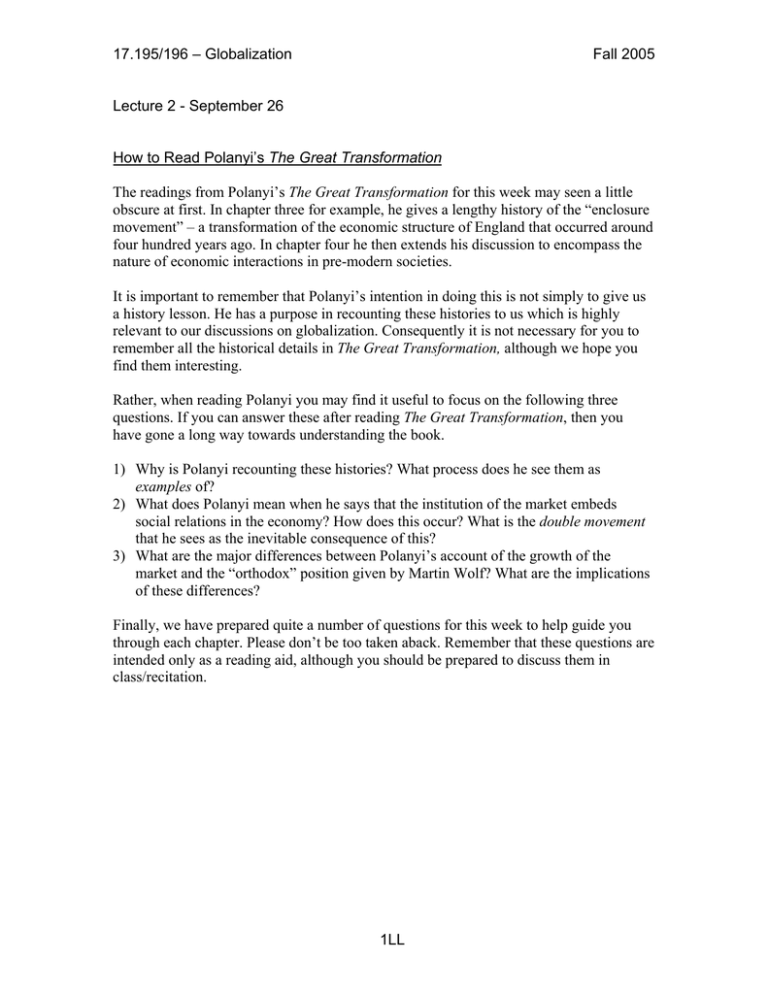
17.195/196 – Globalization Fall 2005 Lecture 2 - September 26 How to Read Polanyi’s The Great Transformation The readings from Polanyi’s The Great Transformation for this week may seen a little obscure at first. In chapter three for example, he gives a lengthy history of the “enclosure movement” – a transformation of the economic structure of England that occurred around four hundred years ago. In chapter four he then extends his discussion to encompass the nature of economic interactions in pre-modern societies. It is important to remember that Polanyi’s intention in doing this is not simply to give us a history lesson. He has a purpose in recounting these histories to us which is highly relevant to our discussions on globalization. Consequently it is not necessary for you to remember all the historical details in The Great Transformation, although we hope you find them interesting. Rather, when reading Polanyi you may find it useful to focus on the following three questions. If you can answer these after reading The Great Transformation, then you have gone a long way towards understanding the book. 1) Why is Polanyi recounting these histories? What process does he see them as examples of? 2) What does Polanyi mean when he says that the institution of the market embeds social relations in the economy? How does this occur? What is the double movement that he sees as the inevitable consequence of this? 3) What are the major differences between Polanyi’s account of the growth of the market and the “orthodox” position given by Martin Wolf? What are the implications of these differences? Finally, we have prepared quite a number of questions for this week to help guide you through each chapter. Please don’t be too taken aback. Remember that these questions are intended only as a reading aid, although you should be prepared to discuss them in class/recitation. 1LL 17.195/196 – Globalization Fall 2005 Questions for Study Karl Polanyi – The Great Transformation, ch.3-6,12,21. Chapter Three 1. Polanyi goes into some detail about the enclosure movement, which occurred in England from the late fifteenth to the mid-seventeenth century. What was the enclosure movement? Who precipitated it? Who argued against it? What do you think the relevance of this story is to globalization today? 2. What drove the emergence of the market system, according to Polanyi? Chapter Four 1. Polanyi gives us another history lesson in chapter four. Why? Who is he arguing against when he says that “the institution of the market…was no more than incidental to economic life?” (p.45) 2. If the market was incidental, what was central to economic life for Polanyi for most of human history? Why is this difference important to him? Chapter Five 1. Why does the market institution mean that “instead of the economy being embedded in social relations, social relations are embedded in the economic system?” (p.60) 2. Contrast Polanyi’s presentation of the spread of markets with the “orthodox” explanation he gives us on page 61, or with Wolf. How are they different? Why does it matter? 3. What social role did towns play, according to Polanyi? (p.65) Why does Polanyi place such an emphasis on the separation of the internal and external market? Chapter Six 1. How did the treatment of land and labor change in moving from the mercantile to the market economy in the late eighteenth century? 2. In chapter six Polanyi tells us what The Great Transformation is. What is it? What are its implications? 2 17.195/196 – Globalization Fall 2005 3. Why does Polanyi say that the treatment of land and labor as commodities is fictitious? (p.76) Do you think he is right? 4. Polanyi states that “nothing saved the common people of England from the impact of the Industrial Revolution.” (p.79) Compare his arguments with those of contemporary critics of globalization. Do you think the Industrial Revolution and Globalization are examples of the same process at work? 5. What is the “double movement?” (p.79) Chapter 12 1. What are the three components that make up the doctrine of laissez-faire? When did laissez-faire emerge as an ideology? 2. What does Polanyi argue is the “paradox” of laissez-faire? (p.147) 3. Why, according to Polanyi, did the move to greater state intervention in national economies occur? What evidence does he use to back his argument? Chapter 21 1. What does Polanyi argue is the solution to The Great Transformation? Is it workable in your opinion? Barry Eichengreen Golden Fetters: The Gold Standard and the Great Depression 1919-1939, ch.1-3. 1. What was the Gold Standard? When did it operate? What caused it to fail? 3
